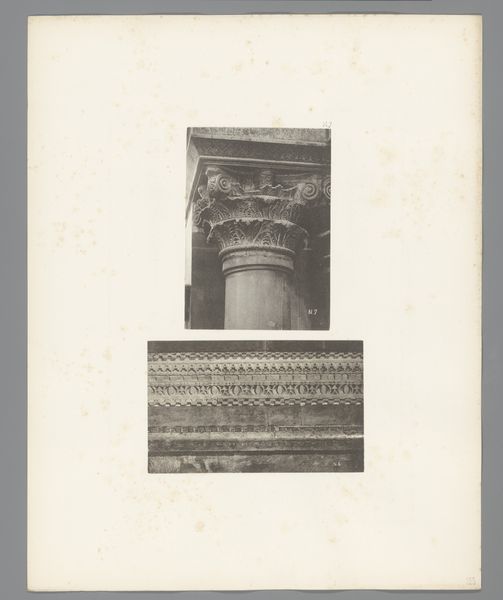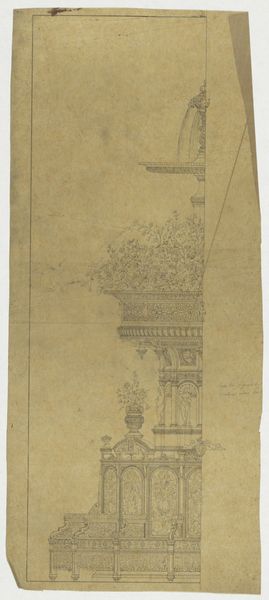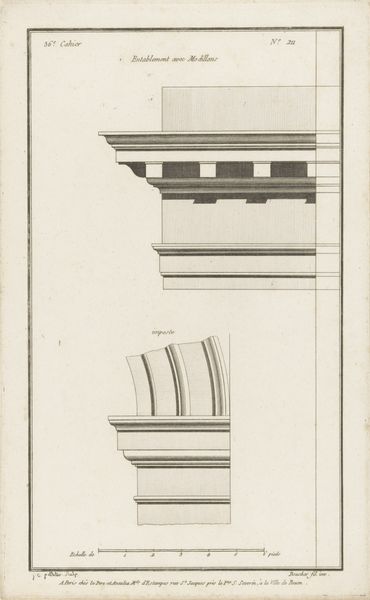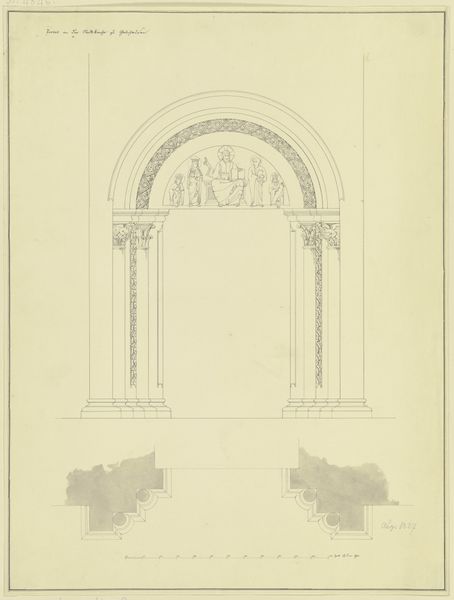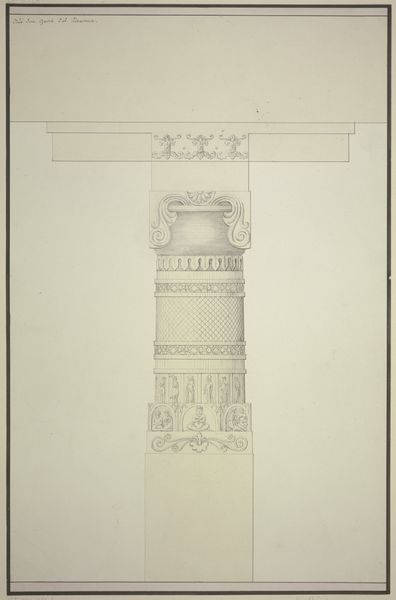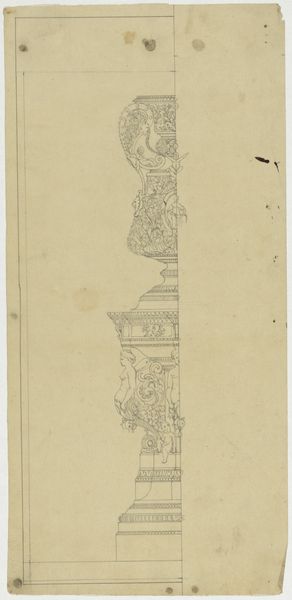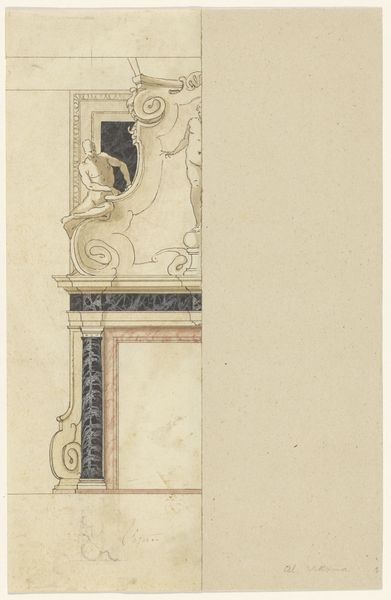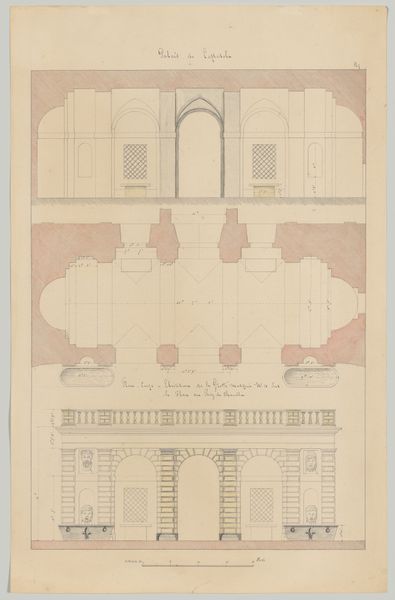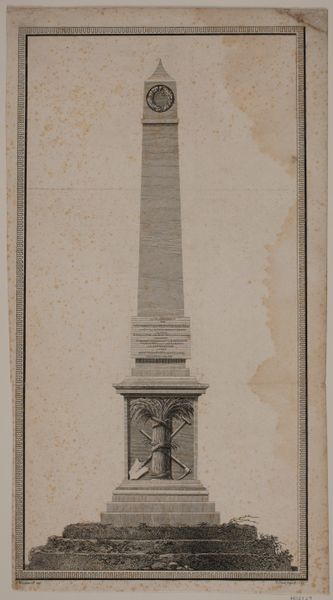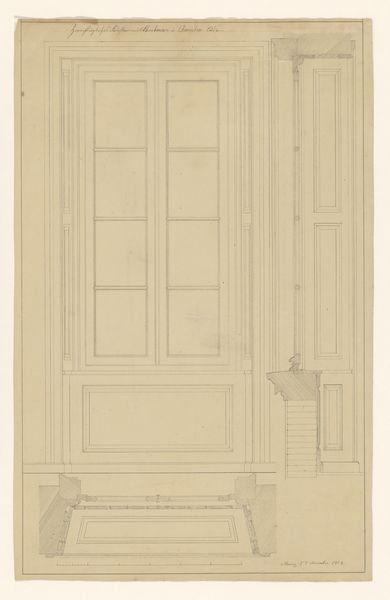
drawing, print, paper, architecture
#
drawing
# print
#
classical-realism
#
paper
#
geometric
#
classicism
#
architecture
Dimensions: Sheet: 23 1/4 × 16 9/16 in. (59 × 42 cm)
Copyright: Public Domain
Editor: This is an "Architectural Study of Classical Entablature," made around 19-19 by F. or T. Grossbach, using drawing and print on paper. It's strikingly detailed, yet austere. What's your take on this meticulous rendering of classical architecture? Curator: It’s interesting to consider this work not merely as an objective study, but as a product of its time. How might the rise of nationalism and imperialism in the 19th century have fueled a fascination with and idealization of classical forms? These forms were often appropriated to legitimize power structures, weren't they? Editor: That's an interesting point. So, are you suggesting this drawing might be more than just an architectural study? Curator: Precisely! I think we must consider it as an active participant in the visual language of power. Classical architecture was often associated with ideals of democracy and order. Who was able to access and shape these ideals? What does it mean to see this form reproduced during the late 19th century, a time of immense social upheaval and inequalities? Does the perfect geometry amplify exclusion and hierarchy? Editor: That’s a compelling idea! I hadn't considered the power dynamics inherent in its use of classicism. It definitely gives the drawing a new layer of meaning. Curator: Exactly. The clean lines and the almost scientific approach actually mask complex social and political narratives. Art isn't made in a vacuum, is it? What stories are included and, more importantly, which ones are excluded? Editor: Absolutely. Thank you; this has shifted my understanding of the artwork! Curator: And it highlights the crucial role of critically examining context in art history. Always ask who benefits, and at what cost.
Comments
No comments
Be the first to comment and join the conversation on the ultimate creative platform.
